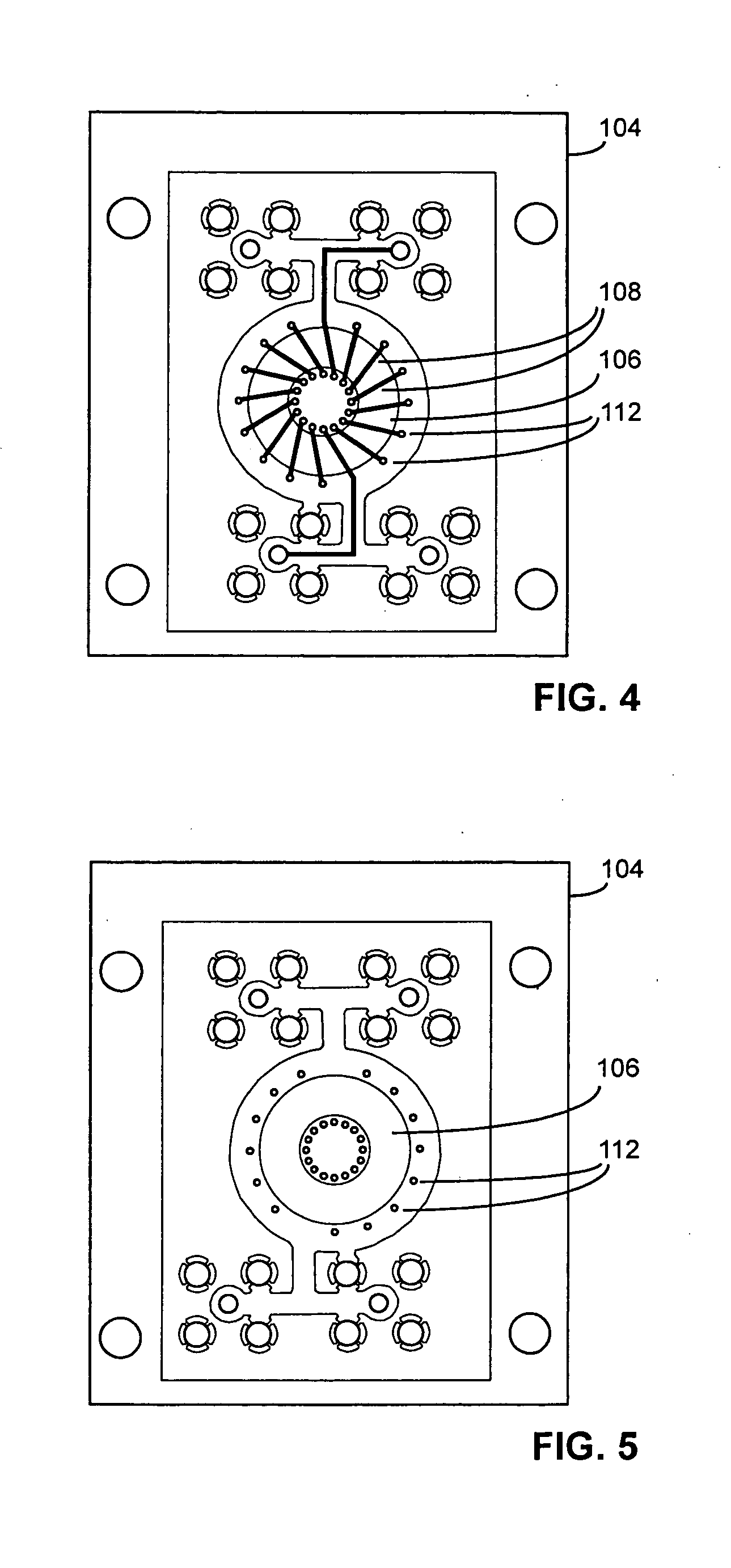Method of manufacturing planar inductors
a technology of inductors and inductors, which is applied in the field of planar conductors, can solve the problems of difficult and expensive to produce inductors of the scale, difficult and expensive to use on many types of substrates or dielectrics, and high temperature process
- Summary
- Abstract
- Description
- Claims
- Application Information
AI Technical Summary
Benefits of technology
Problems solved by technology
Method used
Image
Examples
Embodiment Construction
[0051]FIGS. 1 through 5 illustrate a prototype planar inductor 102 which is been built into a two layer printed circuit board 100. This inductor is of transformer having electrical properties making it suited for use in a range from approximately 100 kHz to hundreds of megahertz. In other embodiments of the invention the planar conductive cores could be of different sizes and have different number and types of windings making them suitable for use at different frequencies.
[0052]FIG. 1 is a top view of this assembly that shows its top layer 104 and its inductive core 106. This figure also shows the top layer 108 of the inductors wiring, which are shown in solid lines. The via holes 112 are used to electrically connect between the inductor's wiring on its top and bottom layers. The conductive ground plane 114 is used to provide shielding from the electromagnetic fields generated by the inductor. The via hole 118 provides a connection on the top layer of the print circuit board to the...
PUM
| Property | Measurement | Unit |
|---|---|---|
| Force | aaaaa | aaaaa |
| Dielectric polarization enthalpy | aaaaa | aaaaa |
| Electrical conductivity | aaaaa | aaaaa |
Abstract
Description
Claims
Application Information
 Login to View More
Login to View More - R&D
- Intellectual Property
- Life Sciences
- Materials
- Tech Scout
- Unparalleled Data Quality
- Higher Quality Content
- 60% Fewer Hallucinations
Browse by: Latest US Patents, China's latest patents, Technical Efficacy Thesaurus, Application Domain, Technology Topic, Popular Technical Reports.
© 2025 PatSnap. All rights reserved.Legal|Privacy policy|Modern Slavery Act Transparency Statement|Sitemap|About US| Contact US: help@patsnap.com



